Flight is one of nature’s most extraordinary achievements. Across millions of years, evolution has produced four distinct groups of flying vertebrates: birds, bats, pterosaurs, and, most recently discovered, certain gliding dinosaurs. But the ability to defy gravity didn’t emerge as a deliberate evolutionary goal—rather, it arose through a series of coincidental adaptations that proved advantageous for entirely different reasons. This remarkable evolutionary journey demonstrates how features originally evolved for one purpose can be repurposed through natural selection, leading to revolutionary new capabilities. The development of flight represents one of evolution’s most fascinating examples of exaptation—a process where traits evolved for one function are later coopted for an entirely different purpose.
The Accidental Origins of Flight

Flight didn’t evolve because prehistoric creatures aspired to soar through the skies. Instead, it emerged gradually through incremental adaptations that initially served completely different functions. For instance, the feathers that eventually enabled bird flight first evolved in dinosaurs for thermal regulation and display purposes, not for flying. Similarly, the wing membranes of bats likely evolved from skin flaps that originally helped with temperature regulation or prey capture. These structures provided unexpected benefits that natural selection then enhanced over millions of years. The path to flight demonstrates a fundamental principle of evolution: complex adaptations often begin as simpler structures serving entirely different purposes, only later being refined for new functions through natural selection acting on random variations.
Feathers: Not Originally for Flight

Perhaps the most surprising aspect of avian flight evolution is that feathers—the defining feature of modern birds’ flight apparatus—didn’t evolve for flying at all. Paleontological evidence reveals that feathers first appeared in non-flying theropod dinosaurs, the evolutionary ancestors of birds. These early feathers were simple, filamentous structures that likely functioned primarily for insulation, much like mammalian fur. Fossil discoveries show that increasingly complex feather structures evolved in ground-dwelling dinosaurs long before any creature took to the air. Later, these feathers served additional purposes such as display, camouflage, and brooding behavior before being repurposed for aerodynamic functions. This evolutionary history challenges the common assumption that feathers evolved specifically for flight, illustrating how natural selection can repurpose existing structures for novel functions.
From Dinosaur Arms to Bird Wings

The transformation of dinosaur forelimbs into the wings of modern birds represents one of evolution’s most dramatic anatomical modifications. Theropod dinosaurs, particularly the smaller, more agile varieties, possessed forelimbs with three fingers and relatively lightweight bone structures. Over millions of years, these limbs underwent progressive changes: fingers fused, wrists became more flexible, and bones hollowed out, all while maintaining their use in activities like grasping prey or climbing. Archaeopteryx, often considered the earliest known bird-like dinosaur from about 150 million years ago, demonstrates an intermediate stage in this transformation with partly modified forelimbs capable of limited aerial capabilities. The modification of the arm and hand bones was accompanied by the development of flight feathers attached to these limbs, creating the first primitive wings. This gradual transition illustrates how selection pressures can reshape existing anatomy into dramatically new structures through incremental changes.
The “Trees Down” vs. “Ground Up” Debate

How the first flying creatures became airborne has been debated for decades, with two primary competing hypotheses: the “trees down” and “ground up” models. The trees-down hypothesis suggests that flight evolved in tree-dwelling ancestors who initially glided between branches, gradually developing powered flight capabilities. This model emphasizes the advantage of even rudimentary gliding ability for arboreal creatures, allowing them to travel more efficiently and escape predators. The ground-up hypothesis, by contrast, proposes that flight evolved in fast-running ground dwellers who used proto-wings for balance and to assist in catching prey, eventually developing the ability to become briefly airborne. Recent evidence from feathered dinosaur fossils tends to support aspects of both models, suggesting the evolution of flight may have followed multiple pathways. The truth likely involves elements of both theories, with different selective pressures operating at different stages of the evolutionary process.
Pterosaurs: The First Vertebrates to Achieve True Flight
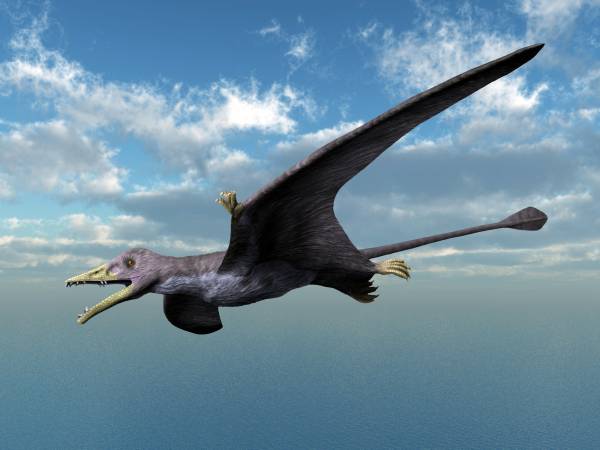
While birds often receive the most attention in discussions of flight evolution, pterosaurs were actually the first vertebrates to evolve powered flight, predating birds by over 70 million years. These remarkable reptiles, closely related to dinosaurs but forming a separate lineage, evolved flight independently with a completely different anatomical approach. Pterosaurs developed wings formed by a membrane of skin, muscle, and other tissues that stretched from an enormously elongated fourth finger to the body and legs. Unlike bird feathers, this wing structure evolved from the modification of skin and supporting tissues. The earliest known pterosaurs already possessed fully formed wings, indicating that the transitional forms leading to their flight capabilities either weren’t preserved in the fossil record or evolved relatively quickly. Their independent evolution of flight demonstrates that when environmental conditions favor aerial locomotion, natural selection can produce similar functional outcomes through entirely different anatomical pathways.
Bats: Mammals Take to the Sky

Bats represent the third major group to independently evolve powered flight, appearing in the fossil record about 50 million years ago. Their wing structure differs dramatically from both birds and pterosaurs, consisting of skin membranes (patagium) stretched between elongated finger bones, the body, and the legs. This unique anatomy evolved from the hands of a small, likely arboreal mammal ancestor. Before developing full flight capabilities, early bat ancestors likely passed through a gliding phase similar to modern flying squirrels. What makes bat flight evolution particularly interesting is how rapidly it appears to have occurred—the earliest known bat fossils already show relatively advanced flight adaptations. Recent genetic studies have identified mutations in genes responsible for limb development that likely contributed to the dramatic finger elongation seen in bat wings. This independent evolution of flight in mammals further demonstrates evolution’s remarkable ability to produce similar functional solutions using different anatomical starting materials.
The Aerodynamic Advantages of Accidental Adaptations

Many of the features that eventually enabled flight initially evolved for entirely different purposes but happened to provide aerodynamic advantages. Hollow bones, for instance, evolved in many dinosaur lineages to reduce weight while maintaining strength, providing metabolic advantages long before flight was possible. These pre-adaptations became critical for flight once other necessary features evolved. Similarly, the keeled sternum (breastbone) that anchors powerful flight muscles in modern birds first appeared in ground-dwelling dinosaurs, where it served different muscular functions. Feather asymmetry—crucial for generating lift during flight—may have initially developed to improve insulation or water resistance. These coincidental benefits illustrate the concept of exaptation, where structures evolved for one purpose provide unexpected advantages in new contexts. This principle helps explain how complex adaptations like flight could evolve gradually through natural selection acting on variations that initially served entirely different functions.
The Metabolic Prerequisites for Powered Flight
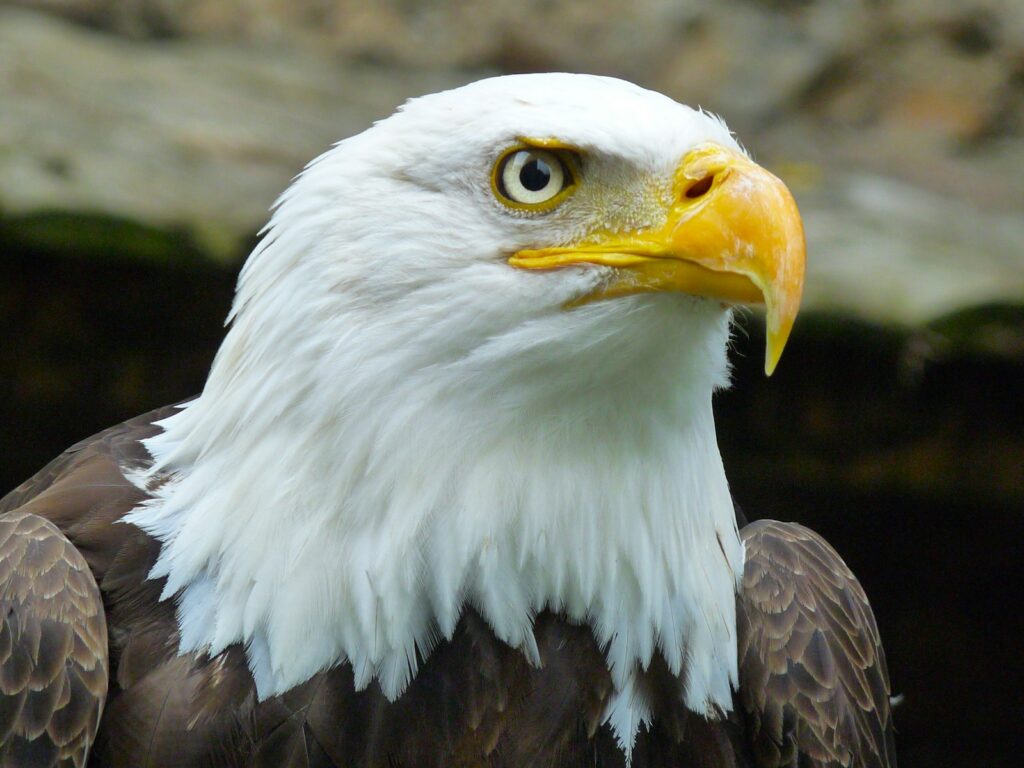
Powered flight requires tremendous energy expenditure, making certain metabolic adaptations necessary prerequisites for its evolution. Birds and bats have among the highest metabolic rates of any animals, supporting the intense energy demands of flight muscles. This high-energy metabolism evolved before true flight capabilities, likely providing advantages in activity levels, thermoregulation, and predator avoidance for pre-flight ancestors. Evidence suggests that the theropod dinosaurs from which birds evolved already possessed relatively high metabolic rates and possibly even some form of endothermy (warm-bloodedness). These metabolic adaptations, which originally evolved to support active predatory lifestyles or thermal regulation, became crucial pre-adaptations for powered flight. The respiratory system of birds, with their unique air sac system allowing continuous one-way airflow through the lungs, represents another critical adaptation that evolved in non-flying dinosaurs before being repurposed to support the extreme oxygen demands of flight. These metabolic foundations demonstrate how seemingly unrelated adaptations can become essential components of complex new capabilities.
The Neural Control Systems Behind Flight
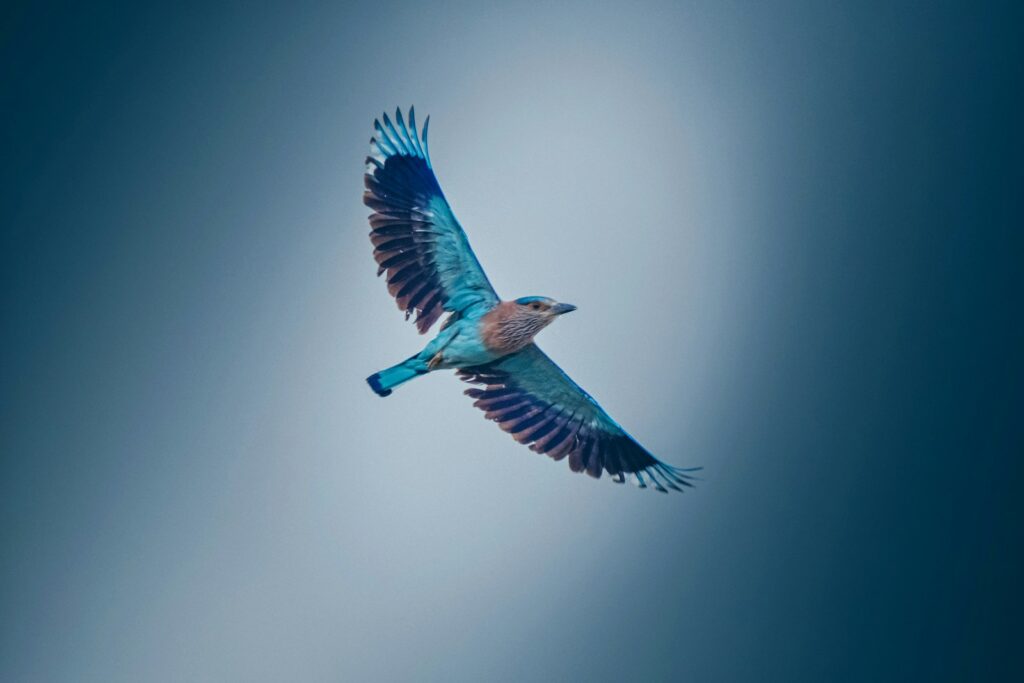
Flight requires sophisticated neural control systems for balance, coordination, and spatial orientation—capabilities that evolved long before powered flight itself. The cerebellum, the brain region responsible for motor coordination, is proportionally larger in flying animals than in their non-flying relatives. This neural machinery initially evolved to coordinate complex movements for ground locomotion, predation, or arboreal living. The vestibular system, which maintains balance and spatial orientation, underwent significant modifications in flying lineages to accommodate three-dimensional movement. These neural adaptations began in terrestrial ancestors where they served different functions before being enhanced and repurposed for aerial navigation. Similarly, the visual systems of flying animals show adaptations for processing rapidly changing visual information during flight, building upon visual capabilities that originally evolved for different ecological purposes. These neural foundations highlight how cognitive and sensory systems that evolved for terrestrial life became essential components of the complex capability for controlled flight.
Convergent Evolution: Multiple Paths to the Sky
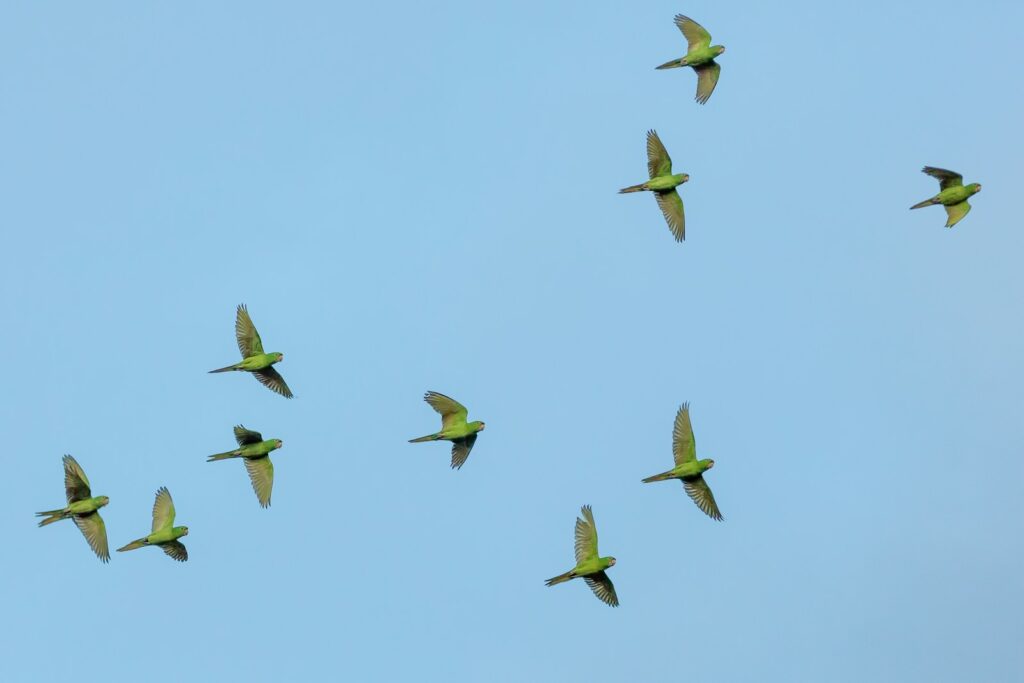
The independent evolution of powered flight in birds, bats, pterosaurs, and certain insects represents one of nature’s most dramatic examples of convergent evolution—the development of similar traits in unrelated lineages due to similar selective pressures. Despite having completely different ancestral starting points and utilizing different anatomical structures, these diverse animal groups all arrived at the same functional capability: powered flight. Each group evolved wings with different anatomical origins: modified feathered forelimbs in birds, skin membranes stretched between elongated fingers in bats, a single elongated finger supporting a wing membrane in pterosaurs, and modified body wall outgrowths in insects. Yet all these different structures solve the same aerodynamic challenges through remarkably similar principles. This convergence demonstrates that when a particular adaptation provides significant advantages, natural selection can fashion similar functional solutions from wildly different anatomical raw materials. Flight evolution shows that while the paths may differ dramatically, similar ecological pressures can drive evolution toward functionally similar outcomes.
The Selective Advantages of Partial Wings
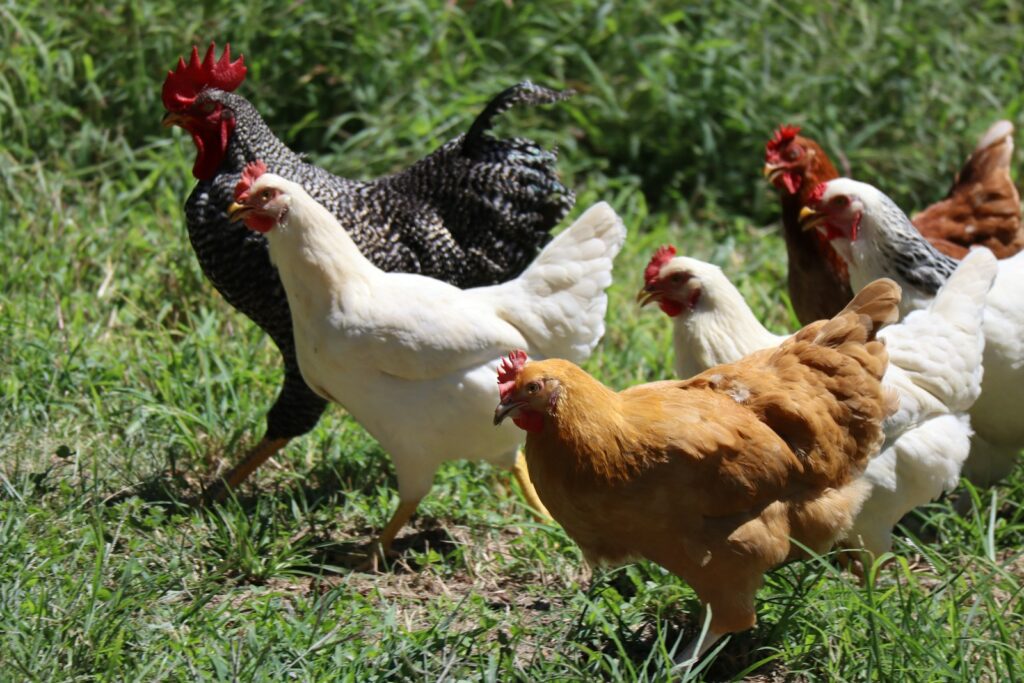
One of the most perplexing questions about flight evolution is what advantages partial wings might have provided before full flight was possible. Recent research offers several compelling explanations for how proto-wings could have been advantageous. Studies of modern ground birds show that even small wing-like structures can provide significant benefits during inclined running, allowing creatures to ascend steeper slopes than would otherwise be possible. Other research demonstrates that wing-like forelimbs can aid in balance during high-speed maneuvers and prey capture. Some scientists propose that proto-wings may have assisted in “wing-assisted incline running,” where rapid forelimb movements help creatures run up steep surfaces—a behavior observed in modern birds like chickens and game birds. Additionally, even rudimentary wings could have provided advantages in predator evasion through controlled falling or basic gliding. These multiple potential advantages explain how natural selection could favor increasingly wing-like structures long before true powered flight evolved, resolving the apparent paradox of how intermediate structures could provide fitness benefits.
Modern Birds: The Refined Flyers

Modern birds represent the most diverse and specialized flying vertebrates, with over 10,000 species displaying remarkable adaptations for various flight styles. From the hovering capabilities of hummingbirds to the long-distance soaring of albatrosses, birds have refined the basic flight adaptations of their dinosaur ancestors into highly specialized forms. This specialization stems from 150 million years of evolutionary refinement since the first bird-like dinosaurs. Modern birds have completely fused hand bones, sophisticated flight feathers with microscopic hooks (barbules) that create a continuous aerodynamic surface, and intricate muscular control systems for precise wing manipulation. Their highly modified skeletal structure includes a keeled sternum for flight muscle attachment, hollow pneumatic bones connected to the respiratory system, and fused vertebrae that provide rigidity during flight. The diversity of wing shapes and flight styles among modern birds—from the rapid wing beats of sparrows to the stiff-winged soaring of hawks—demonstrates how natural selection continues to refine flight adaptations for specific ecological niches, long after the initial evolution of basic flight capabilities.
The Future of Flight Evolution

Flight continues to evolve in contemporary species, responding to ongoing environmental changes and selective pressures. Some island bird species, for instance, have evolved reduced flight capabilities or even flightlessness in environments lacking mammalian predators, demonstrating that flight is energetically costly and may be selected against when unnecessary. Climate change and habitat fragmentation are creating new selective pressures on flying species, potentially favoring different wing morphologies and flight capabilities in the future. Some researchers suggest that increasing urbanization may select for birds with wings adapted for more maneuverable flight in cluttered environments. The ongoing evolution of flight reminds us that adaptation is never complete but continues as environments and selective pressures change. Understanding the evolutionary history of flight not only illuminates one of nature’s most remarkable achievements but also provides insights into how complex adaptations evolve through the repurposing of existing structures—a lesson with implications far beyond the study of flying animals.
Conclusion: Evolution’s Remarkable Opportunism

The evolution of flight stands as a powerful testament to the opportunistic nature of natural selection. What began as adaptations for entirely different purposes—insulation, display, predation, or thermoregulation—ultimately combined to enable one of life’s most extraordinary capabilities. Flight didn’t evolve as a planned trajectory but emerged through a series of coincidental advantages that accumulated over millions of years. This evolutionary journey demonstrates a fundamental principle: complex adaptations don’t require foresight or planning but can emerge through the gradual refinement of structures that initially served entirely different functions. The multiple independent origins of flight in vertebrates show that when environmental conditions favor particular capabilities, evolution can find diverse pathways to similar functional outcomes using completely different anatomical starting points. Understanding flight’s evolutionary history reminds us that some of nature’s most remarkable innovations began as evolutionary flukes—accidental variations that happened to provide unexpected advantages, setting life on extraordinary new trajectories.



